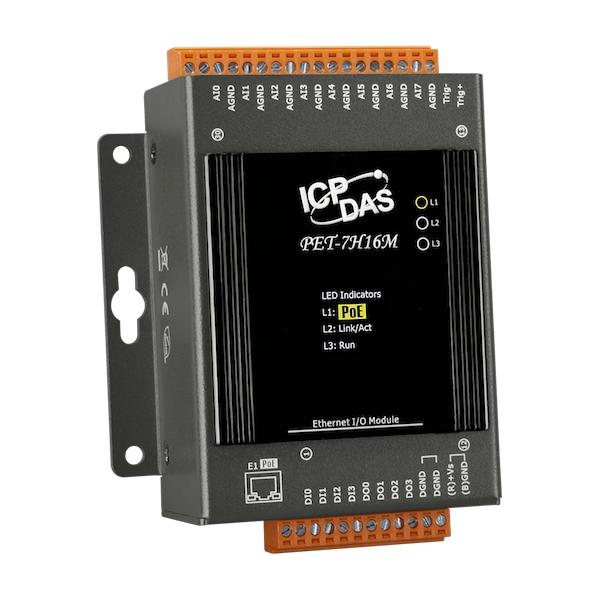
ICP DAS USA releases high-speed data acquisition module with built-in Ethernet
July 12, 2019
By Manufacturing AUTOMATION

July 12, 2019 – ICP DAS USA‘s new PET-7H16M is a high-speed data acquisition module with a built-in Ethernet communication port for network data transfer.
It includes eight high-speed analog input channels with a FIFO of 2,048 samples and a maximum sampling rate of up to 200 kS/s, with 16-bit analog to digital (A/D) converters simultaneously sampling on each channel.
In addition to the analog input channels, each module provides four digital input and four digital output channels.
The module provides a programmable input range on all analog input channels, and the digital output can be set to output with short-circuit and overload protection.
The PET-7H16M series also provides 4 kV ESD protection as well as 2,500 VDC intra-module isolation.
PET-7H16M supports three different trigger modes for A/D conversion: a software trigger, an external clock trigger, and an external digital signal event trigger (post-trigger/pre-trigger). The software trigger can acquire a sample whenever needed, and the continuous A/D acquisition, or the acquisition of N data samples, begins after the command is triggered.
In external clock trigger mode, the speed of the A/D acquisition and the amount of data acquired are controlled by external electrical signals. In digital signal event trigger mode, the A/D acquisition parameters are configured by user commands and the A/D acquisition of the N data samples is triggered by an external electrical signal.
PET-7H16M replace the computer and capture card. The data collected from different sites is all fed into in a central location while providing real-time systems monitoring.
The PET-7H16M can be used for continuous data acquisition, high-speed interval acquisition, and simultaneous acquisition from multiple channels. With a maximum acquisition speed of 200 kHz for each AI channel, it is suitable for high-speed data acquisition of various mechanical, electronic and physical signals in industrial production, automatic control, electrochemistry, medicine and more.
Advertisement
- Murrelektronik Canada opens new Ontario location
- VW, Ford broaden alliance to autonomous, electric vehicles